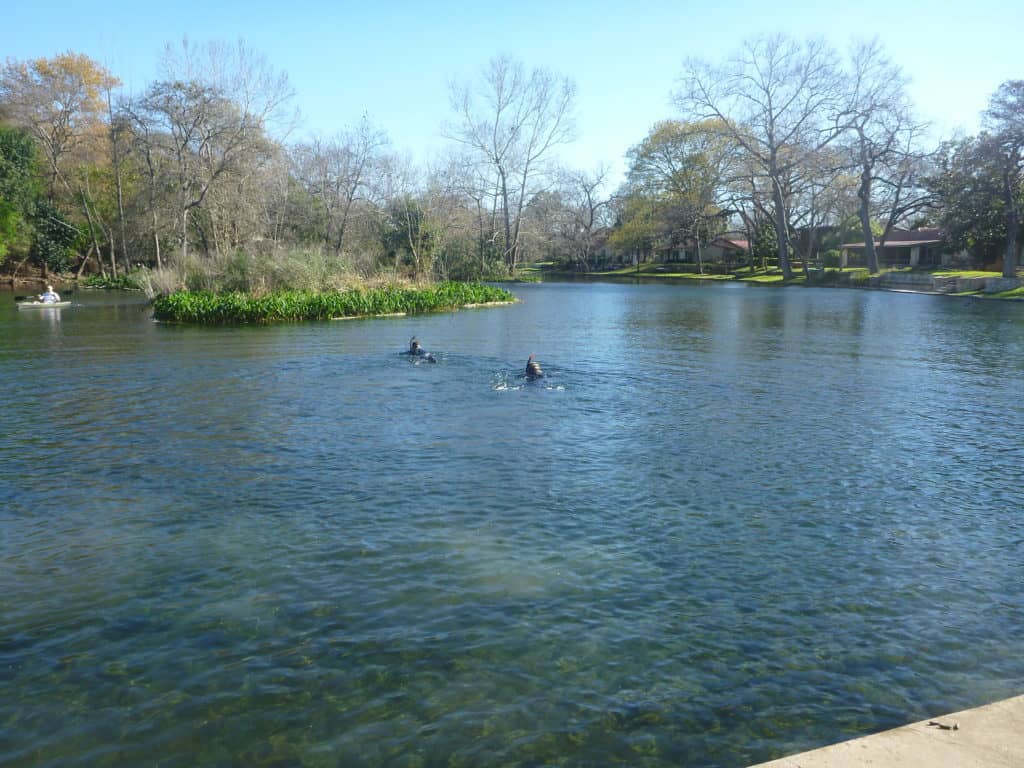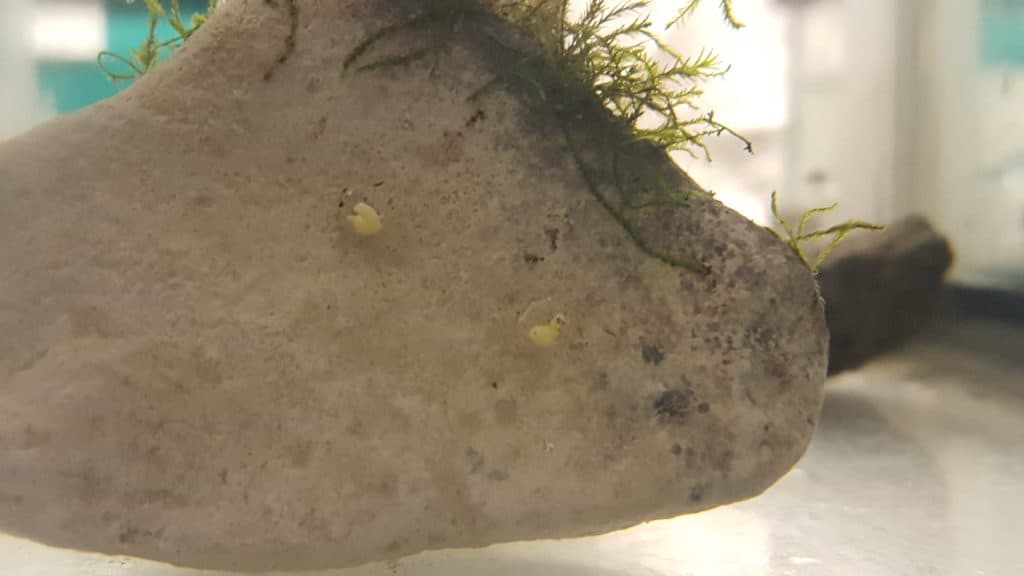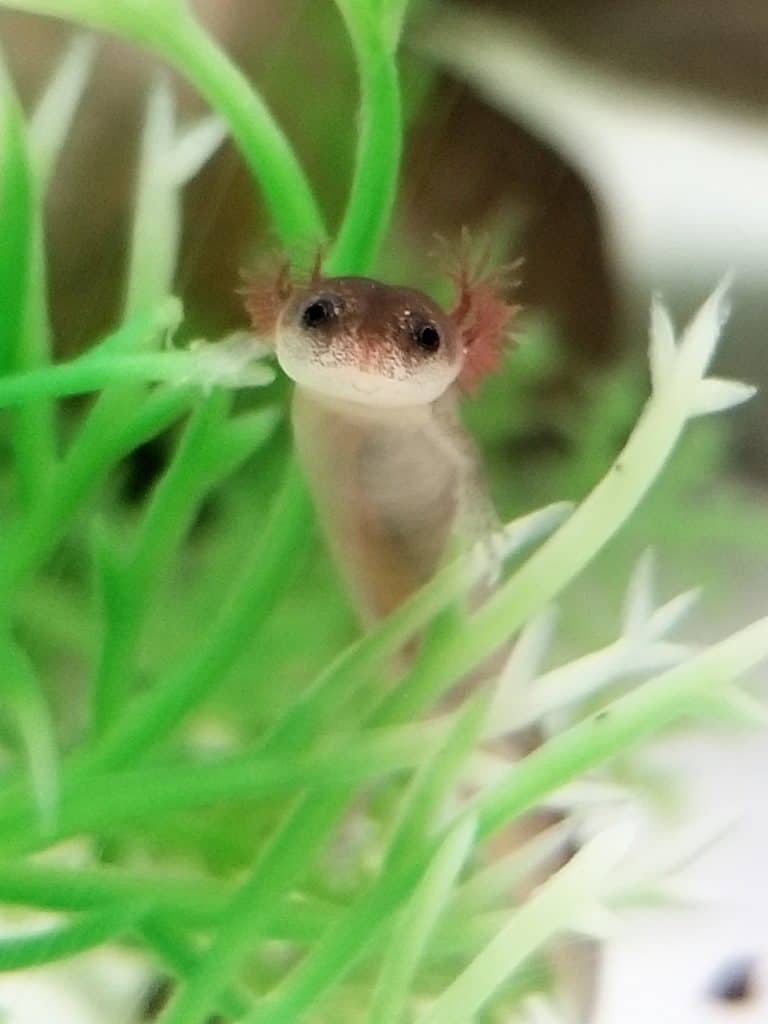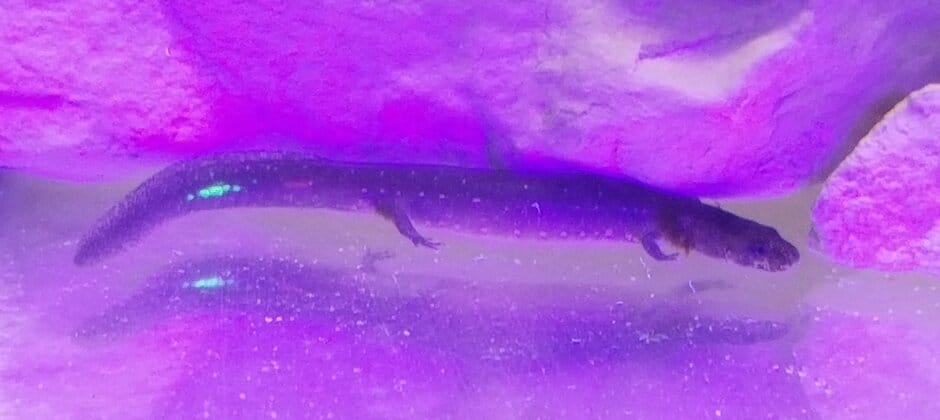Share this article
Researchers discover rare salamander eggs in Texas spring
Linda Moon was snorkeling in search of salamanders in a crystal-clear spring in central Texas when she made a surprising discovery. She was conducting a routine collection of a unique species in the water of Comal Springs — an area of upwelling water from the Edwards Aquifer she and her colleagues refer to as the “boiling sand” due to the way the cool water surges up from the ground. She lifted a rock under the water and discovered a couple of bead-sized milky clear balls attached to its underside.
Moon shot up out of the water and yelled to her colleagues with the Edwards Aquifer Authority (EAA). “Stop what you’re doing — found eggs!”

Researchers survey and collect wild salamanders in Comal Springs. Credit: Dave Britton, USFWS
The Edwards Aquifer springs are home to a number of unique salamander species, including the Comal Springs salamander (Eurycea pterophila), the federally threatened San Marcos salamander (Eurycea nana), and the Texas blind salamander (Eurycea rathbuni). These species only live in the relatively small geographic area around the various springs. Researchers still have a lot to learn about these species — they have only ever documented finding five eggs from two other Texas Eurycea species — the Barton Springs salamander (Eurycea sosorum) and the Jollyville Plateau salamander (Eurycea tonkawae).
So when Moon found the pair of eggs in Comal Springs between Austin and San Antonio, she and her colleagues were understandably excited.

The first two eggs of the Comal Springs salamander ever discovered in the wild.
Credit: Linda Moon, USFWS
“In the past, [the location of eggs] has just been conjecture,” said Moon, now a lab technician with the U.S. Department of Agriculture. “It’s important to know where these eggs were laid so we can protect the habitat.”
Moon and her colleagues brought the eggs to the laboratory that’s run through the EAA’s Edwards Aquifer Habitat Conservation Plan. There, captive salamanders are raised as “insurance populations” due to relatively small numbers in the wild, and potential threats to the habitat. The Edwards Aquifer Authority works with the U.S. Fish and Wildlife Service to conserve species including the salamanders found in the springs.
In a study published recently in Ecosphere, the researchers describe how the two eggs they discovered hatched into two Comal Springs salamanders — one male and one female.
“The salamander mother lays each egg individually and sticks them to rocks or other areas,” said Lindsay Campbell, who was with the U.S. Fish and Wildlife service as the managing biologist for the Refugia program, at the time.

A wild Comal Springs salamander at the Edwards Aquifer Refugia program facility.
Credit: Kelsey Anderson, USFWS
The discovery can help inform conservationists about types of areas where salamanders lay their eggs. Given that the Comal Springs salamander’s life history is similar to its close relatives in the other springs that emerge from the Edwards Aquifer, it’s likely that those species also lay their eggs by attaching them to the bottom of rocks, Campbell said.
The eggs are also helping the researchers learn about their captive rearing processes. Captive Comal Springs salamanders at their facility laid eggs a couple days earlier, allowing the scientists to compare development side by side. They found no differences, Campbell said.
Header Image: A Comal Springs salamander that hatched from one of the first two eggs ever discovered in the wild. Credit: Kelsey Anderson, USFWS








